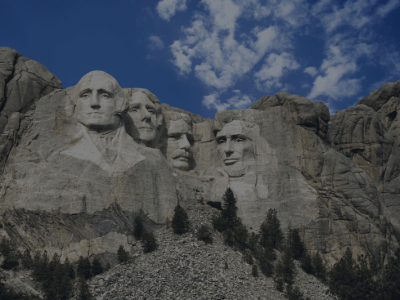RAPID CITY, S.D. (Oct. 21, 2025) — What began as a question about conflicting calculus textbooks three decades ago has earned South Dakota Mines Professor Emeritus Donald Teets, D.A., one of mathematics’ highest honors.
Teets received the Paul R. Halmos – Lester R. Ford Award from the Mathematical Association of America (MAA) for his paper “Lagrange Points and the James Webb Space Telescope,” published in The American Mathematical Monthly. The award recognizes outstanding mathematical exposition published in the journal.
In the 1990s, Teets noticed two textbooks credited a calculus method to different mathematicians—one to Germany’s Carl Friedrich Gauss and another to France’s Adrien-Marie Legendre. His curiosity led him to an 1802 letter written by Gauss in German about the orbit of the asteroid Ceres.
With the help of former Mines Provost Karen Whitehead, Ph.D., who translated the letter, Teets uncovered a historical link between the origins of calculus and astronomy—a discovery that would shape his career.
“That’s what got me started in this,” said Teets, who taught at Mines from 1988 to 2023. “I had such success with that, so I began to explore these historical connections with the mathematics I was teaching in class.”
The research partnership with Whitehead earned the pair the MAA Allendoerfer Award in 2000 and sparked what Teets describes as “three decades of very rewarding study” at the crossroads of mathematics, history, and astronomy. His research has since examined the original works of Kepler, Newton, Laplace, Lagrange, Bessel, and other great scientific thinkers.
His latest award-winning paper explores the Lagrange points—five equilibrium positions in the Sun-Earth system where gravitational forces balance—one of which hosts the James Webb Space Telescope.
“I was immediately drawn to the idea that there was no better way to learn about Lagrange points than to read Lagrange’s original work,” Teets said. “The whole theory that makes the James Webb mission what it is was done in 1772. What I find fascinating is that stuff that is relevant today was first done centuries ago.”
While Teets has published several articles over his career, this was his first in The American Mathematical Monthly.
“I thought it was an extraordinary honor just to get published in the journal, and then to receive an award was nothing short of spectacular,” he said.
Though officially retired, Teets continues his research and writing, with a follow-up paper already underway. Away from academia, he remains active—logging about 2,000 miles annually on the George S. Mickelson Trail by bike.
Teets joins a distinguished group of South Dakota Mines mathematicians recognized by the MAA, including current department head and professor Travis Kowalski, Ph.D., who has earned both the George Pólya Award and the Chauvenet Prize.



